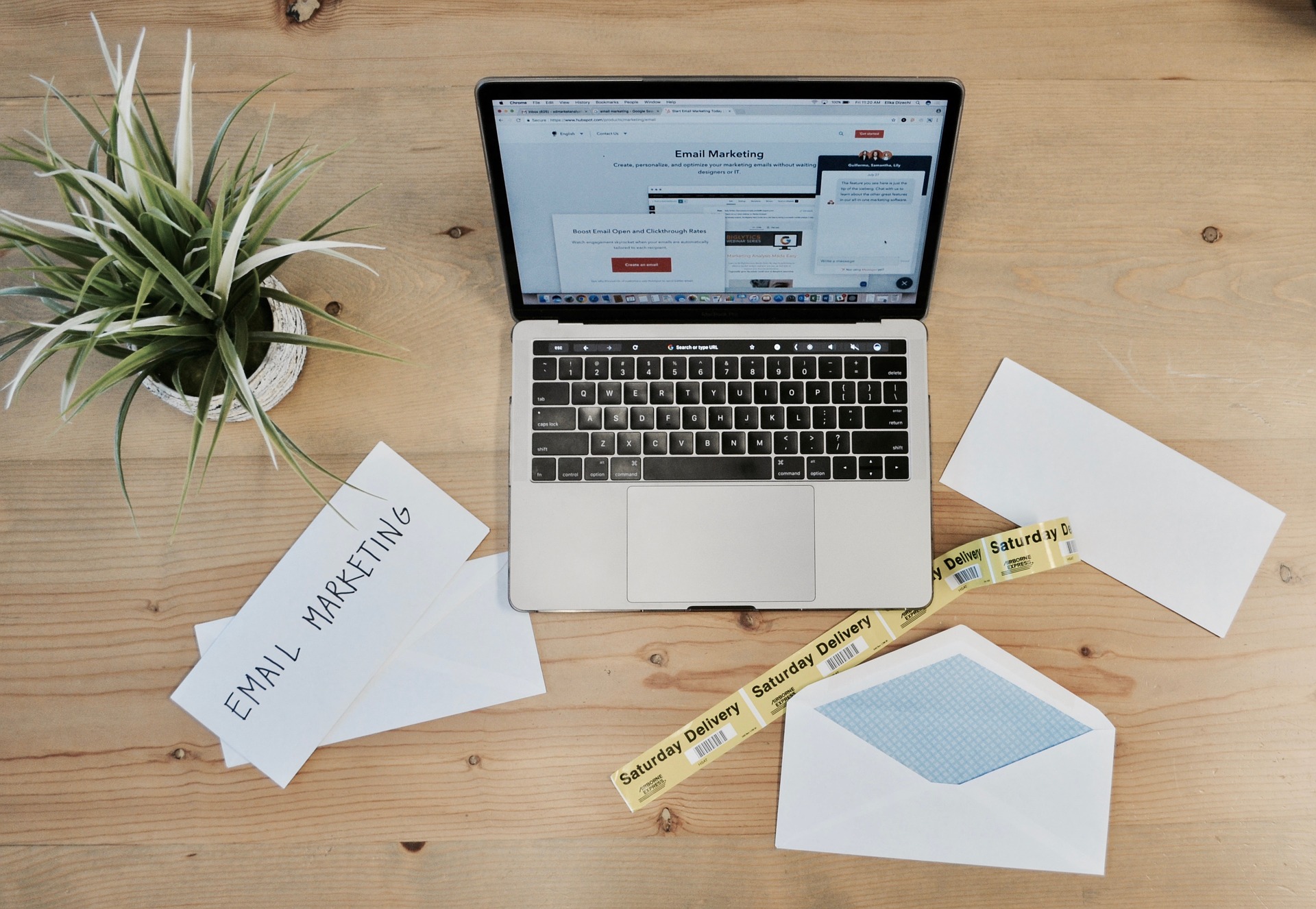
Summer school: B2B email marketing refresher
School may be out for summer but that doesn’t mean we can’t keep learning when it comes to developing our skills in email marketing!
While many email marketing best practices stay the same year-over-year it never hurts to take a second look to ensure your email marketing campaigns are hitting the mark each and every time you hit send.
If you’re not seeing the results you’re expecting with every email send, it might be time to go back to the basics and re-enroll in Email Marketing 101 this summer.
Let’s dive into some fundamentals of email marketing that drive success but can sometimes be overlooked because they are so basic.
Open rate
We love comparing ourselves to others but not all industries are created equally, especially in the B2B space. According to Campaign Monitor, the average email open rate is 18% with a click-to-open rate of 14%.
If your emails are falling below that average, here are some ideas of what to fix to bring it up.
How to improve your email marketing campaigns’ open rate:
- Test new subject lines: Are your subject lines compelling and clickable? Do they sound like a robot wrote them? Are they getting cut off in the inbox and possibly reading offensively? These are all things you need to think about in your subject lines. Perhaps you’ve used the same ones before because you think they’re catchy and attention-grabbing, but now they’ve become stale. Play around with different subject lines and preview text to understand what drives your email recipients to click.
- Add emojis to your subject line: Now, I’ll say this is dependent on if it’s appropriate for your brand and/or industry to include emojis. I’m fine with emojis from clothing brands and food delivery services but would be a bit put off if my bank or credit card companies started using emojis in their emails. Emojis can quickly add a human element and make your emails seem more fun, as long as it works for both your brand’s image and how your customers view you.
- Add personalization: We can be selfish creatures and our interest is often piqued when our names are used. Try personalizing emails with the recipient’s name in the subject line, first line of text, or go even deeper by showing them website content they’ve looked at before or related content they may not have seen based on their activity. Tailoring an email to your customers’ interests is worth the effort.
- Verify relevancy: If you have segmented lists it should be super easy to make sure each email marketing message is relevant to that audience. If your open rates are dropping, that could be an indicator your messaging isn’t resonating or is too wide and isn’t relevant to that subscriber and they’ve become used to not opening your emails because they know they’re not relevant.
- Send at different days or times: I like using other analytics tools to see when my customers or prospects are active, like on social media or from insights gleaned in Google Ads and Google Analytics. Then, I can use that data to test different times and days to send emails if I know people are active online. Your emails don’t have to be sent only during work hours and during the work week, run some tests to see if a Sunday morning send catches their interest more than a Wednesday afternoon one does.
Click-through-rate
That same Campaign Monitor survey found the average click-through rate clocks in at 2.6%. The click-through rate really indicates engagement and interest in your website content, product, or offering. Is yours below 2%, let’s get it fixed!
How to improve your email marketing’s click-through-rate:
- Segmented and targeted emails: One common reason click-through-rates are low is because the content isn’t targeted or the lists aren’t segmented enough, thus the email isn’t relevant to a portion of your audience. Use the data you have about your subscribers to create segmented lists and send them content tailored to their interests and needs. If you don’t have the data you need to create those lists, send out a survey to your subscribers telling them you want to make sure your emails are relevant and engaging and that you want to hear from them on what they want to be emailed about. It’s an easy way to update your lists with good information.
- Buttons vs. links: While buttons tend to do well on mobile, I’ve often found hyperlinked text is still clicked a lot in B2B email campaigns. You could try using hyperlinked text in your copy and end your email with a CTA that sends people to the same destination URL.
- A/B test layout: Test your layout to see if images, GIFs or video stills work better in your hero, test if alternating rows of text works better, try new CTAs, and test the length of your copy or headlines to find what encourages clicks and engagement.
- Images are linked: This one is often overlooked but many of us have been accustomed to clicking on images instead of buttons or linked text so it’s important to always double check that every image is linked in your email.
- Less content or more content: Some audiences cringe when they see giant newsletter-style emails and others love it as they’d rather get everything at once than more frequent smaller emails. You’ll never know unless you test – or even segment out those customers who love lots of content and those that hate it. You can also test the amount of content in your email, for example keep your copy short and end with a question to encourage clicks or have a full-sized paragraph that provides a key takeaway.
- Re-engagement campaign: Sometimes clicks drop because the subscriber is no longer engaged with your content. Enroll inactive or less engaged contacts into a re-engagement campaign to see if you can get their interest back or if you need to remove them from your database all together.

Unsubscribe
The average unsubscribe rate clocks in at 0.17%. Now remember to keep this number separate from your spam rate as they are different.
While no one likes to see anyone unsubscribe from their emails, sometimes in B2B that can be a good thing as you’re not sending emails to people that may no longer work at the company you have an email address for nor are you sending emails to people who will never convert and bring down your averages across all of your email marketing metrics. But, if you know your lists are good and you’re still seeing unsubscribes, there are a few things to look at.
How to reduce your unsubscribe rate:
- Better segmentation: Like click-through-rate, unsubscribe rates can be high when people feel emails are irrelevant or annoying.
- Fewer emails: There have been so many brands that I’ve been tempted to unsubscribe from just because their email marketing team has opened the floodgates on how many emails they send me. Take a closer look at how often you’re emailing your contacts, especially if anyone is enrolled in automated campaigns and then getting a newsletter and then getting a promotional email and so on. It’s exhausting as the receiver and tends to make people inch their cursor closer to that unsubscribe link in your email footer. When it comes to email, less is more can be a good thing as people will be excited to get your emails and not dreading clicking them open or just putting them in the trash.
- Weekend send: Another option is to move when you send your emails around and try sending them on the weekend instead so they’re waiting for your subscribers on Monday morning when they get to work instead of appearing in their inbox alongside six other brands vying for their attention.
Spam
I’m glad to see that the average spam rate is 0.02%, meaning we as marketers are getting better at it and keeping spam rates low by following laws and email marketing best practices. You always want to make sure your emails aren’t spam or even spammy looking, unless you want your brand blackballed from email service providers.
How to reduce your spam rate:
- From name: Make your From name clear and consistent. I actually hate when brands add a CEO’s name or other C-Suite executive’s name to the email from name when it could have just as easily come from the brand itself. I don’t know who this person is and now I’m mad that they snuck into my inbox. Unless the majority of your audience knows who that person is, it looks like a trick just to get people to open the email. Now, one brand I’ve seen that does pull this off well is Drizly as they make a joke out of it.
- Say no to lists: Never email people who didn’t subscribe or give you permission to email them! It shouldn’t have to be said this day and age but do not buy email marketing lists.
- Avoid spammy words: Unless part of your job is protecting people’s accounts, try to avoid sending any emails with words like: information, security, account, compromised, cash, credit, etc. These words tend to get picked up by spam filters.
- Strip formatting: Make sure if you copy and paste your email copy from one doc to your email builder, that you paste plaintext or strip your words of any formatting. Funky formatting is always a trigger for an email to be routed to the spam folder.
Bounce rate
The average bounce rate is 1% according to the Campaign Monitor survey. Unfortunately your bounce rate has more to do with the recipient than you so there’s not a ton you can fix on your end as you rely on the quality of data subscribers give you, like no typos in their email address.
If you do have a higher bounce rate than average, there are some thing to take a closer look at:
- Remove invalid email addresses: If an email bounces more than twice to an email address, get it out of your database or see if a salesperson has the right information for that subscriber, client, or prospect. It’s not doing you any favors to send to invalid email addresses.
- Do not buy lists: I brought it up in the point above but it’s worth mentioning twice. Just say no!
- Double opt-in: Switch to a double opt-in to ensure email addresses are valid and that people are actively opting in. So many brands do double opt-ins these days that most customers don’t think twice about validating their action to sign up for your emails.
Did I miss any tips for improving email marketing? Tell me your thoughts in the comments below!




